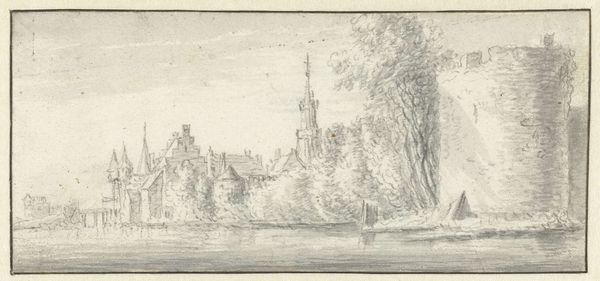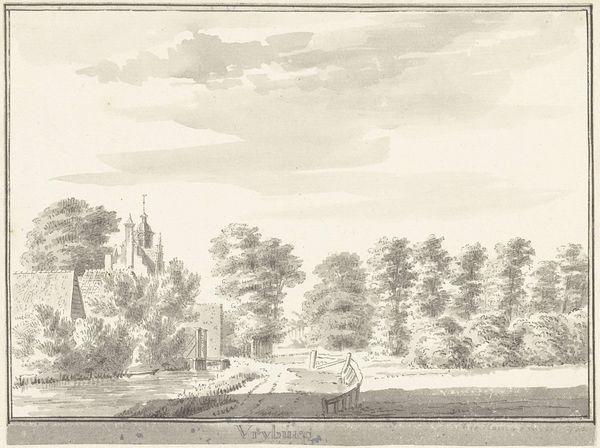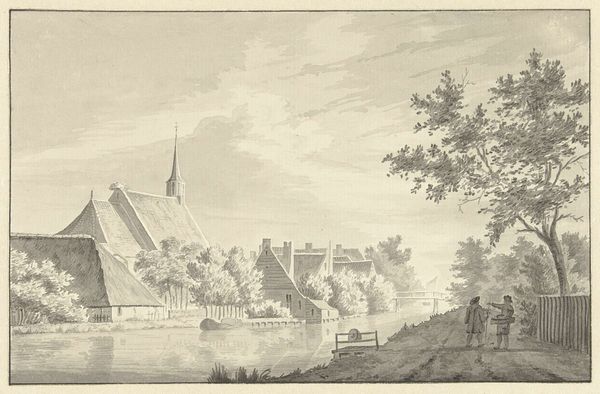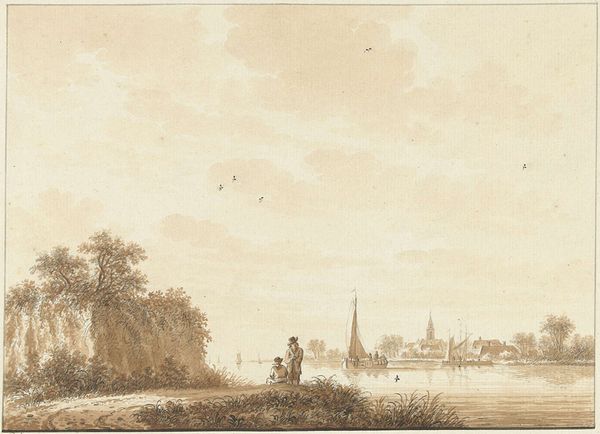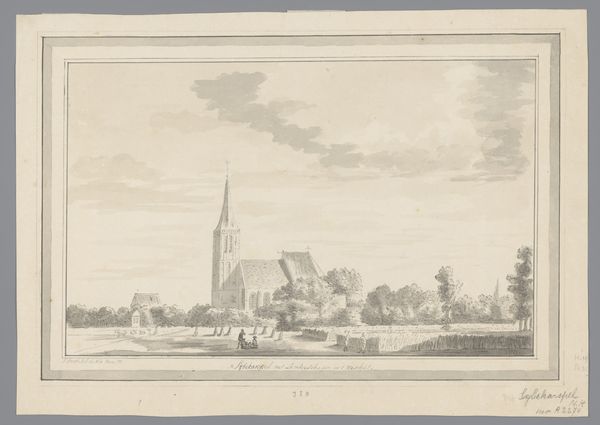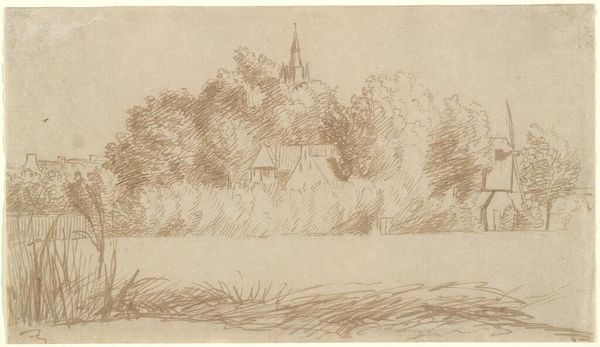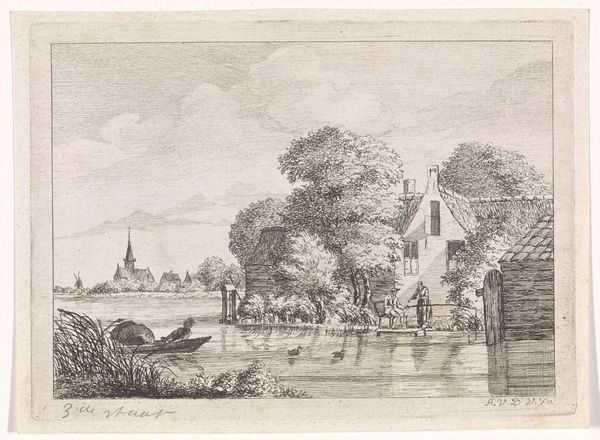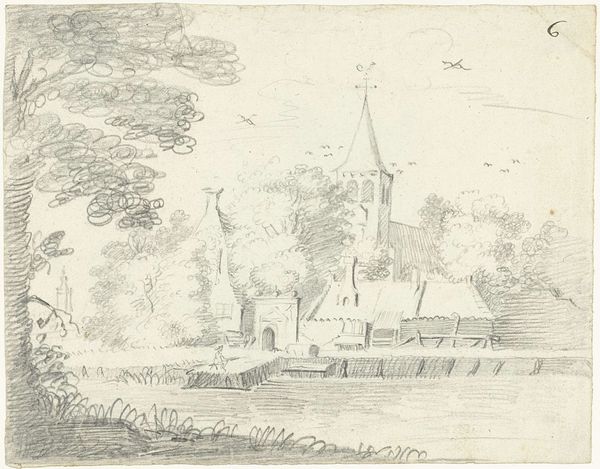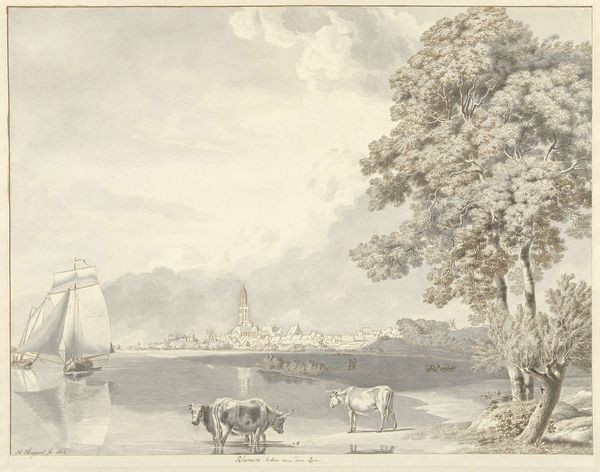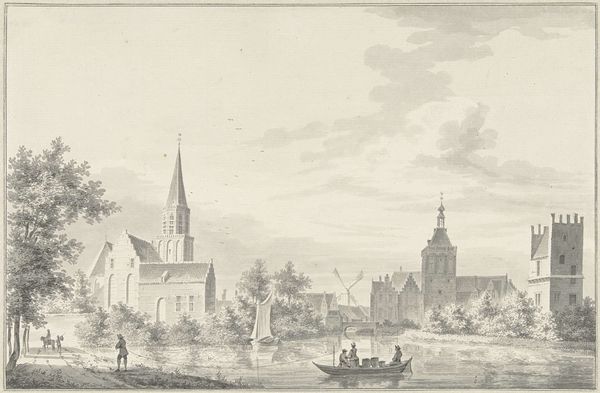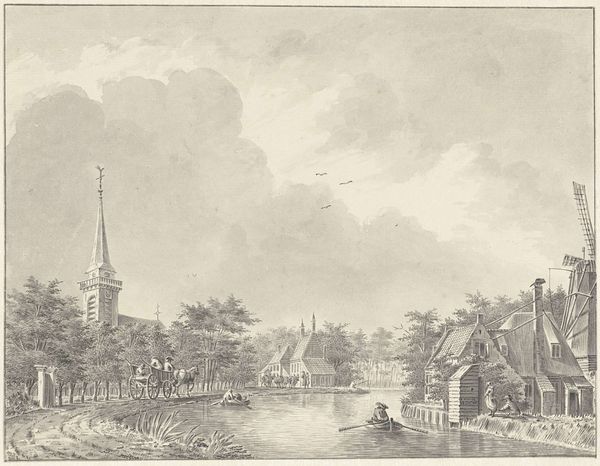
drawing, paper, ink
#
drawing
#
dutch-golden-age
#
landscape
#
paper
#
ink
#
architecture drawing
#
cityscape
#
genre-painting
Dimensions: height 189 mm, width 286 mm
Copyright: Rijks Museum: Open Domain
Curator: This is "View of Alblasserdam," a drawing created by Paulus van Liender between 1756 and 1757, using ink on paper. Editor: It’s quite delicate. The gray wash gives the whole scene a misty, almost dreamlike quality. The architecture seems to rise ethereally from the water. Curator: Absolutely. Alblasserdam was a significant hub for shipbuilding and trade during the Dutch Golden Age, deeply connected to the political and economic power structures of the time. This image can be interpreted as both a picturesque scene and a visual record of the town's socio-economic status. Editor: I notice the prominence of the church spire. Its verticality really anchors the composition. Does it represent a deliberate invocation of religious values amidst this commercial activity? Curator: Undoubtedly. Religious institutions often functioned as both spiritual and social centers. Depicting the church so prominently could signal its integral role in shaping the town's identity and the values upheld by its inhabitants. Editor: There's something captivating in the mirrored reflections of the buildings in the water, it almost doubles the architectural presence. Water is such a powerful symbol, historically linked with cleansing, reflection, even the unconscious mind. Does the artist imply some sort of purification through industry here? Curator: Interesting question. It could be a deliberate symbolic link between the bustling life and spiritual renewal, as though commercial industry supports the maintenance of cultural or religious foundations. In terms of gender and race dynamics, one could interpret the drawing as a portrayal of a landscape constructed through centuries of colonial profit, where nature appears docile and ordered but that order depends upon extraction and violence happening elsewhere. Editor: A fascinating consideration, positioning a local view inside a global situation. As we consider those contextual meanings, I'm also stuck by the drawing’s serene nature, despite knowing the socio-political undercurrents could involve oppression. Art manages to hold the nuance of multiple possible realities simultaneously. Curator: I agree. And in this way, this deceptively simple scene encapsulates an array of historical, economic, and deeply human meanings. It serves as a window into a specific time and place, while prompting us to consider universal themes of community, identity, and our place in the world. Editor: Ultimately it’s an echo of our complicated history, shown through a serene, visually appealing symbol.
Comments
No comments
Be the first to comment and join the conversation on the ultimate creative platform.
